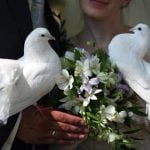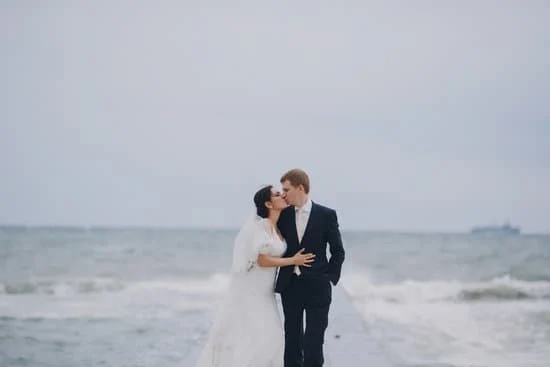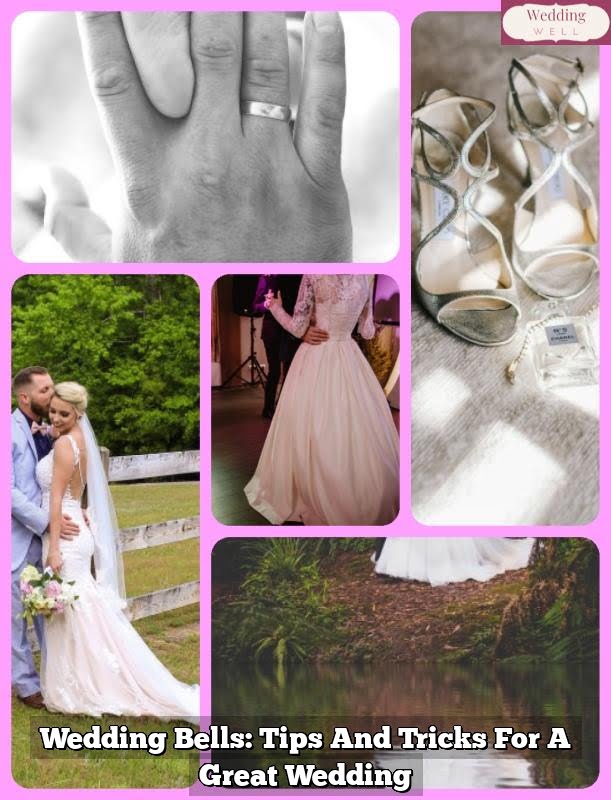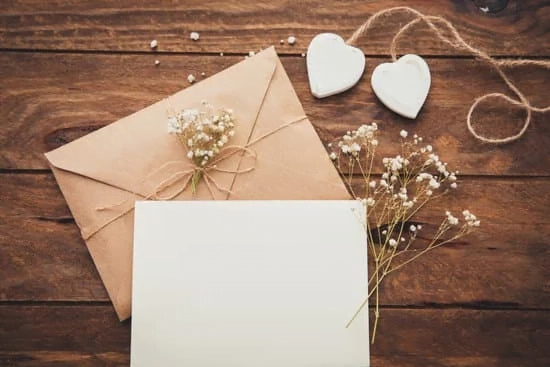A wedding processional is a traditional and symbolic part of a wedding ceremony that holds great significance. It marks the beginning of the ceremony and sets the tone for the rest of the event. The processional involves the entrance of the wedding party, including the bride, groom, and their respective families and friends. In this article, we will delve into the history, order, cultural variations, music selection, and tips for planning a memorable wedding processional.
The wedding processional has a rich history that dates back centuries and has evolved over time. Understanding its historical roots can provide insight into its cultural significance and traditions. From ancient customs to modern practices, the wedding processional has been shaped by various influences and holds different meanings for different cultures.
As we explore the significance of the wedding processional in this article, we will also discuss the typical order in which the wedding party enters the ceremony. Each step of the procession carries its own symbolic meaning, reflecting the couple’s values, beliefs, and personal style. Additionally, we will take a closer look at how different cultures and religions have their own unique wedding processional traditions, highlighting diversity and inclusivity in this timeless ritual.
History of Wedding Processional
The history of the wedding processional is deeply rooted in ancient traditions and has evolved over time to become an integral part of modern wedding ceremonies. Dating back to ancient Rome, the wedding processional was a way for the bride to showcase her family’s wealth and social status as she made her way to the groom’s home. The tradition continued through the Middle Ages, with variations depending on social class and cultural customs.
As time passed, the wedding processional evolved to include not only the bride and groom but also their respective wedding parties. In many cultures, this procession symbolizes the merging of two families and the support of loved ones as the couple begins their new life together. The order in which members of the wedding party enter varies by tradition, but each individual’s role is significant in its own right.
In religious ceremonies, such as Christian or Jewish weddings, the history of the wedding processional is deeply intertwined with specific religious practices and symbolism. For example, in a Christian ceremony, it is common for the bride to be escorted by her father down the aisle, symbolizing his endorsement of her union with her partner. Understanding this historical context can help couples make informed decisions about how they want to incorporate or modify traditional elements into their own wedding processional.
The Order of the Processional
The order of the wedding processional is a crucial aspect of the ceremony, as it sets the tone for the entire event. It is essential to understand the traditional order in which the wedding party enters the ceremony. Typically, the processional begins with the officiant and groom entering from the side of the venue and taking their places at the altar. Following this, the parents of the couple are escorted to their seats, either by ushers or by family members.
Next in line are the bridesmaids and groomsmen, who can enter separately or together, depending on individual preferences. The maid or matron of honor may choose to walk alone or be accompanied by an usher. Finally, all eyes are on the bride as she makes her grand entrance, accompanied by her father or another significant person in her life.
It is important to note that while this is a traditional order of procession, there is no hard and fast rule when it comes to planning a wedding processional. Each couple has the flexibility to personalize their own procession based on their cultural traditions, personal preferences, and unique circumstances. Ultimately, what matters most is that the processional reflects the love and commitment of the couple as they begin this new chapter in their lives.
In addition to understanding the typical order of a wedding processional, couples should also consider factors such as venue layout and timing when planning their procession. Coordination with wedding planners and venue staff can ensure that everything runs smoothly on the big day. By carefully considering all these elements, couples can create a memorable and meaningful wedding processional that sets the stage for a beautiful ceremony.
Different Cultural Traditions
The wedding processional is a significant part of a wedding ceremony, as it sets the tone for the entire event. It is the formal entrance of the wedding party, including the bride and groom, and their respective families and attendants. However, different cultures and religions have their own unique wedding processional traditions that reflect their beliefs, customs, and values.
In many Western weddings, the processional typically begins with the seating of grandparents and parents, followed by the entrance of the bridal party. The groom then enters with his groomsmen, and finally, the bride makes her grand entrance.
However, in traditional Hindu weddings, the Baraat is an integral part of the groom’s processional. The groom arrives at the wedding venue in a lively procession accompanied by his family and friends while music and dancing are an essential part of this joyful celebration.
Similarly, in Jewish weddings, there is a traditional processional sequence known as Kabbalat Panim where the bride and groom are seated separately to receive guests before joining together for the ceremony. Orthodox Christian weddings often feature a ceremonial walk called “Dance of Isaiah” where the couple walks around a table three times as part of their processional.
It is fascinating to see how diverse cultures have their own beautiful ways to mark this special moment in a couple’s journey towards marriage. Understanding these different cultural traditions allows us to appreciate and respect the richness of wedding ceremonies around the world.
| Wedding Tradition | Description |
|---|---|
| Hindu Baraat | The groom arrives at the venue with a lively procession involving music and dance |
| Jewish Kabbalat Panim | A ritual where bride and groom receive guests separately before joining together for the ceremony |
| Orthodox Christian Dance of Isaiah | The couple walks around a table three times during their processional |
Music Selection
The wedding processional is an integral part of a wedding ceremony, setting the tone for the entire event. One key element that contributes to the atmosphere and emotion of the processional is the choice of music. The right music can enhance the beauty and significance of this special moment, creating a memorable experience for everyone involved.
The Role of Music in the Wedding Processional
Music has the power to convey emotions and sentiments in ways that words cannot. In the context of a wedding processional, the music sets the mood for the bride’s entrance, creating an atmosphere of joy, anticipation, and romance. The selection of music should reflect the couple’s personalities and preferences, as well as complement the overall theme or style of the wedding.
Considerations for Music Selection
When choosing music for the wedding processional, couples should consider factors such as their cultural or religious traditions, as well as the location and setting of their ceremony. Some couples may opt for traditional classical pieces, while others may prefer contemporary or folk music. It’s important to also consider whether live musicians will be performing or if recorded music will be used, as this can impact song choices and arrangements.
Customizing Your Music Choices
Couples can personalize their processional by selecting meaningful songs that hold significance in their relationship. Whether it’s a favorite love song, a piece with sentimental value, or a melody that represents their shared interests, incorporating personal touches into the music selection can make the wedding processional even more meaningful. Additionally, working with musicians or DJs who are open to accommodating specific requests can ensure that the chosen songs are performed or played exactly as desired on the big day.
Bridal Processional
The bridal processional, also known as the bride’s entrance, is a highly anticipated and emotional moment in any wedding ceremony. It marks the official start of the wedding and sets the stage for the rest of the event. This section will delve into the significance of the bridal processional and explore some of the traditions associated with it.
Significance of the Bridal Processional
The bridal processional holds immense significance as it symbolizes the bride’s transition from being single to entering into marriage. It is a moment that is filled with excitement, nerves, and anticipation for both the bride and groom, as well as their loved ones. The music accompanying the bride’s entrance sets a romantic tone and creates an atmosphere of joy and celebration.
Traditions Associated With the Bridal Processional
In many Western cultures, it is customary for guests to rise when the bride makes her entrance. This tradition stems from ancient customs where it was believed that standing when a bride entered would ward off evil spirits.
Additionally, in some traditions, such as Jewish weddings, both parents may escort the bride down the aisle, symbolizing their support and blessing of her union with the groom. Other traditions include having flower girls or ring bearers leading the way for the bride, scattering flower petals or carrying symbolic items.
Incorporating Personal Touches
Couples often choose to personalize their bridal processional to make it uniquely meaningful to them. This can include selecting a special song that holds sentimental value, having family members or beloved pets accompany them down the aisle, or incorporating cultural or religious rituals into their entrance. Adding personal touches to the bridal processional can create lasting memories and make this moment even more special for everyone involved.
Overall, understanding what a wedding processional entails can help couples plan this significant aspect of their big day in a way that reflects their love story and unique personalities. Making thoughtful choices about how to structure this important part of the ceremony ensures that it will be a cherished memory for years to come.
Groom’s Processional
The groom’s processional is an integral part of the wedding ceremony, symbolizing his journey to the altar to unite with his bride. This part of the processional holds great significance in many cultures and traditions, as it marks the groom’s official entrance and sets the tone for the rest of the ceremony.
Typically, the groom enters before the bridal party, accompanied by his best man or other members of the wedding party. The groom’s processional serves as a moment for him to take center stage and prepare for the arrival of his soon-to-be spouse. It is a time for him to gather his composure and reflect on the commitment he is about to make.
In some cultures, such as in Hindu weddings, the groom may have a grand entrance on a decorated horse or elephant, accompanied by a lively procession known as a baraat. In other traditions, such as in Jewish weddings, the groom might be escorted by both parents down the aisle. Regardless of cultural variations, the groom’s processional is a cherished and memorable part of any wedding ceremony.
– Examples:
- Best man walking alongside
- Traditional music accompaniment
- Cultural customs unique to different regions
Tips for Planning a Wedding Processional
In conclusion, the wedding processional is a meaningful and traditional part of the wedding ceremony that holds significance in many cultures and religions. Understanding the history and evolution of the processional can provide couples with insights into its cultural and symbolic importance. Whether it’s a grand entrance or a simple procession, the wedding processional sets the tone for the rest of the ceremony and reflects the couple’s personality and values.
The order of the processional, music selection, and incorporating personal touches are crucial aspects to consider when planning a wedding processional. It is important for couples to communicate with their officiant, wedding planner, or coordinator to ensure that everything runs smoothly on the big day. The bride’s entrance is often a focal point of the ceremony, steeped in tradition and symbolism, while the groom’s processional also holds its own significance.
Couples should take time to plan and personalize their wedding processional to create a memorable experience for themselves and their guests. By understanding the significance of each element of the procession, from historical origins to individual cultural traditions, couples can tailor their processional to reflect their unique love story and create lasting memories on their special day.
Frequently Asked Questions
What Is the Difference Between Processional and Recessional?
The difference between processional and recessional is that the processional refers to the entrance of the wedding party, including the bride, while the recessional is their exit at the end of the ceremony.
What Is a Bridal Processional on a Wedding Program?
A bridal processional on a wedding program is the part of the ceremony where the bride enters and walks down the aisle to meet her groom at the altar. It’s a significant moment in any wedding.
What Is the Difference Between the Prelude and the Processional at a Wedding?
The difference between the prelude and the processional at a wedding is that the prelude music is played as guests arrive and take their seats, creating a welcoming atmosphere. The processional, on the other hand, marks the official start of the ceremony as it accompanies the entrance of those participating in it.

Welcome to my blog about home and family. This blog is a place where I will share my thoughts, ideas, and experiences related to these important topics. I am a stay-at-home mom with two young children. I hope you enjoy reading it! and may find some helpful tips and ideas that will make your home and family life even better!





